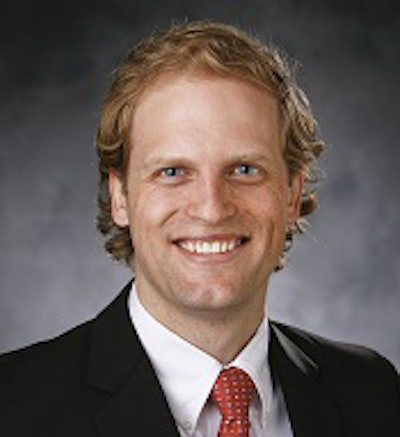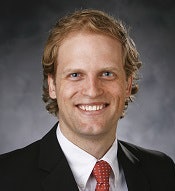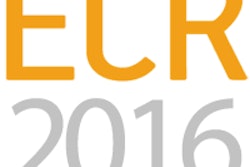
Using an abbreviated screening protocol for contrast-enhanced breast MR works just as well in terms of specificity and sensitivity as a full protocol, according to a new study published online in Academic Radiology.
Previous studies have evaluated the cost-effectiveness of screening breast MR and come to various conclusions depending on the estimated breast cancer incidence and exam cost, wrote a group led by Dr. Lars Grimm of Duke University Medical Center.
 Dr. Lars Grimm of Duke University Medical Center.
Dr. Lars Grimm of Duke University Medical Center.Limiting screening MRI to high-risk women (20% or more lifetime risk) helps maintain cost-effectiveness, but the benefit to women at intermediate risk (often due to breast tissue density) is lost. A shorter breast MRI protocol could allow for lower cost and more rapid throughput, making breast MR a useful alternative screening modality for women with dense breast tissue, according to the authors (Acad Radiol, July 4, 2015).
"Breast MR takes density out of the equation," Grimm told AuntMinnie.com. "And if you're able to do a breast MR study in less time, not only will its cost be reduced, but more patients can be imaged."
Dueling protocols
For this pilot study, three breast imagers evaluated 48 breast MR exams (24 normal, 12 benign, and 12 malignant) selected from a high-risk screening population. The exams were presented in three viewing protocols:
- Abbreviated 1: Included fat-saturated precontrast T2-weighted, precontrast T1-weighted, and first-pass T1-weighted postcontrast sequences
- Abbreviated 2: Included the abbreviated 1 protocol plus a second-pass T1-weighted postcontrast sequence
- Full: Included nonfat-saturated T1-weighted, fat-saturated T2-weighted, precontrast T1-weighted, and three or four dynamic postcontrast sequences
After viewing each shortened protocol, the reading radiologist assigned a final BI-RADS assessment and noted the time it took to interpret the exam. A month later, the study readers interpreted the full-protocol exam.
"We didn't want the readers to remember their interpretations from when they reviewed the abbreviated protocols, so we put in a one-month washout period so it would be like reading the studies de novo," Grimm said.
The researchers found no statistically significant difference in sensitivity between the abbreviated 1 or abbreviated 2 protocols and the full protocol. There also was no statistically significant difference in specificity between the three protocols.
| Abbreviated vs. full MRI protocols | ||
| Protocol | Overall sensitivity | Overall specificity |
| Abbreviated 1 | 86% | 52% |
| Abbreviated 2 | 89% | 45% |
| Full | 95% | 52% |
Grimm and colleagues only tracked interpretation time for the abbreviated 1 and full protocols. They found that it was essentially the same, at 2.98 minutes for the abbreviated 1 protocol and 2.95 minutes for the full version -- a surprising result.
"It could be that radiologists aren't using all the full-protocol data -- they're taking out the most pertinent information anyway," he said.
The abbreviated protocols could shorten exam time slots by almost 10 minutes, according to Grimm.
"We estimate that using the abbreviated protocols would shorten the [time slot needed] from 45 minutes to 36 minutes, which would increase the number of studies that could be performed from 16 to 20 in a 12-hour shift," he said. "The abbreviated 1 protocol shaves off nine minutes and the abbreviated 2 protocol shaves off about seven minutes. These times include patient instructions as well as dead time while transitioning between sequences."
The findings suggest that shortened MR protocols may become a viable clinical option for screening women with dense tissue, Grimm and colleagues concluded.
"If use of a shortened breast MRI protocol could contribute to lower costs and more widespread availability as a screening tool, there may be potential benefits for screening women with dense breast tissue," they wrote. "Although breast ultrasound is widely available, with relatively low cost and no radiation, the sensitivity of screening breast ultrasound is still considerably lower than breast MRI, and the technology suffers from a higher number of false-positive results than MRI."





















